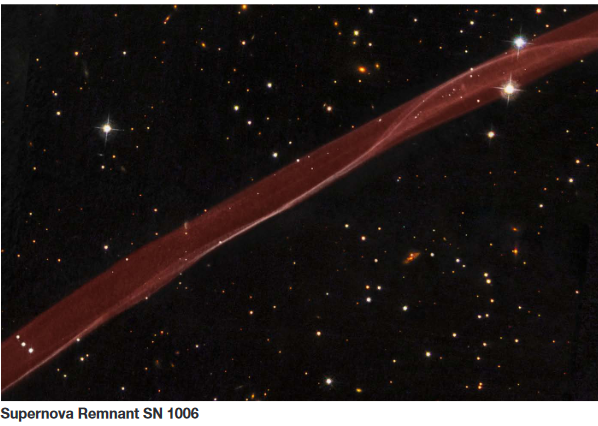Discover the reconstructed image of the closest supernova ever observed to Earth

The most powerful and closest supernova to Earth occurred more than a thousand years ago during the Middle Ages. Corroborating data from space observations from multiple telescopes, researchers made a stunning photo of it.
What would happen if a star exploded near Earth? It all depends on how far away it is from us. What is certain is that we would be entitled to one hell of a show !

A millennial supernova
Well that's exactly what happened to earthlings over 1000 years ago . An incredible supernova exploded was observed for days at a time seen from Europe, Japan and China according to written reports dating back to the time. The observations of today's astronomers also corroborate these historical testimonies.
His nickname? The supernova SN 1006. Brighter than Venus itself, the most visible star in the sky (after the sun of course), was visible for several weeks, which is to say the intensity of the light released. One can imagine how the earthlings of the Middle Ages were able to interpret this sign from heaven.
The explosion of a white dwarf
Before dying, the star that caused this supernova was a white dwarf that captured the stellar mass of a nearby star (in astronomy, this is called a binary system of two stars orbiting a common center of gravity ). But by sucking up this mass, the first one became unstable and logically imploded.
Based on observations of the current sky, the researchers believe that many iron atoms were thrown into space by the explosion. This is, in part, what allowed researchers to find his trail, in addition to the testimonies of the time.

A telescope crossover
For your viewing pleasure, here is what the supernova looked like . This image, created by combining data from different telescopes, combines X-ray imagery from the Chandra Observatory, optical data from the University of Michigan's Curtis Schmidt Telescope, the Cerro Tololo Observatory, and the Digitized Sky Survey. Other data from a few more telescopes were used to complete this composite image.
Okay, it looks like a kind of big colored soap bubble floating in space but the result of this addition of data is very valuable for researchers. Indeed, it provides new evidence for the acceleration of charged particles in the wave-scattering effect caused by the blast of supernovae.

Some (sublime) images showing the result of stellar explosions (supernovas
Image 1: remnant of supernova SN 1006, which is about 7000 light-years from Earth.
Image 2: SN 1987A and its strange gas ring.
Image 3 : SN 1572.
Source: websites

